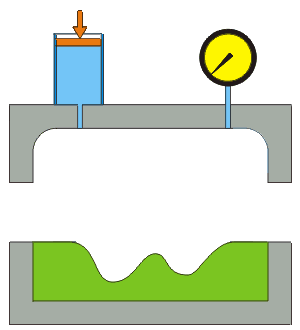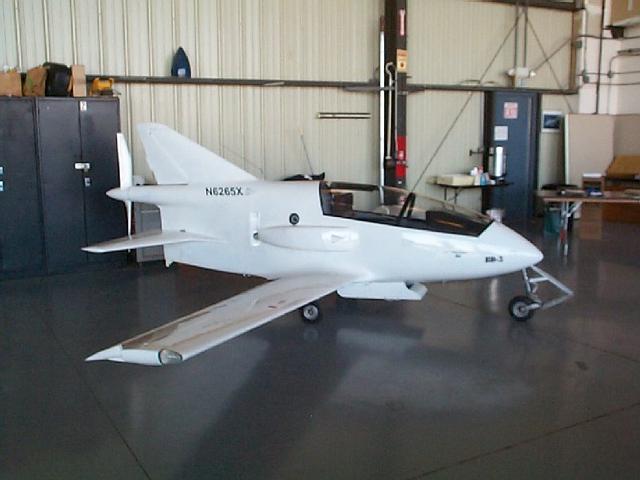|
BedeCorp
James R. Bede (April 17, 1933 – July 9, 2015) was an American aircraft designer. He designed well over a dozen aircraft starting in the 1960s, but a string of business failures kept most of these designs out of widespread use. Bede Aviation Bede was raised in Cleveland, Ohio. He graduated from West Technical School in Cleveland in 1952 and attended Fenn College and the Municipal University of Wichita, receiving his Aeronautical Engineer Bachelor of Science Degree in 1957. He started work as a performance engineer with North American Aviation that year, where he worked on the FJ-4 Fury and A3J Vigilante projects for the United States Navy. He stayed at North American only briefly, returning home to Cleveland in 1961 to form Bede Aviation with his father James, in order to produce a kit-built aircraft of his own design, the BD-1. At the time, the general aviation market was priced beyond the means of the average consumer. Bede believed the way to solve this problem was t ... [...More Info...] [...Related Items...] OR: [Wikipedia] [Google] [Baidu] |
Bede BD-4
The Bede BD-4 is an American light aircraft, designed by Jim Bede for homebuilding and available since 1968. It was the first homebuilt aircraft to be offered in kit form. It remains one of the world's most popular homebuilts with thousands of plans sold and hundreds of examples completed to date. Design and development Based on his previous work with innovative light aircraft, the BD-1 (eventually developed into the American Aviation AA-1 Yankee) and BD-2, Jim Bede designed the BD-4 to be the first real "kitplane" in the world. The design was based on a high-wing cantilever monoplane of conventional design, able to be fitted either with a tailwheel or a tricycle undercarriage. When building the plane, it was also possible to choose between a two-seat or four-seat version. The intention was to allow people with little or no fabrication experience to start with a set of comprehensive plans and work up to a bolt-together operation in which complex components were provided fr ... [...More Info...] [...Related Items...] OR: [Wikipedia] [Google] [Baidu] |
Bede BD-1
The Bede BD-1 was a two-seat, single-engine, low-wing monoplane, the first design of American aeronautical engineer Jim Bede. The BD-1 was designed in 1960 as a kit-built aircraft intended for home assembly by amateur builders. Design goals included a kit price of $US 2500, including a rebuilt 100 hp (75 kW) engine and a cruise speed of 130 knots (240 km/h). The prototype N624BD first flew in 1962. No kits were sold however, and it was not until Bede had been removed from the company and the design was reworked - including the removal of the folding wing feature - that it entered production as the American Aviation AA-1. Design The BD-1 was a low-wing monoplane of all-metal construction, utilizing aluminium honeycomb construction and a laminar flow wing. The aircraft was predominantly of bonded, rather than riveted, construction. It featured a sliding canopy and two seats. The aircraft was designed to be towed behind a car to allow it to be stored at home in a ga ... [...More Info...] [...Related Items...] OR: [Wikipedia] [Google] [Baidu] |
Bede Aircraft
Bede Aircraft Corporation was founded by aeronautical engineer Jim Bede in Cleveland in 1961 to produce the BD-1 kit aircraft, which eventually became the American Aviation Corporation's AA-1. The company also created and produced a number of advanced kit planes including the famous Bede BD-5 (pusher propeller driven) and BD-5J (turbojet driven). The BD-5J has held the Guinness record as the World's Smallest Jet Aircraft for more than a quarter century. Versions of it saw use in various Budweiser commercials (the Bud Light Jet, which was lost in an inflight fire and crash unrelated to airshow work). The tiny jet also appeared in two James Bond movies; ''Octopussy'' starring Sir Roger Moore, and later in a cameo appearance, hanging from the wall of Q's workshop in ''Die Another Day'' starring Pierce Brosnan as Agent 007. A later design, the BD-10 powered by the same engine ( GE J-85) used on Lear Jet business jets, claimed to be the first supersonic personal jet built fro ... [...More Info...] [...Related Items...] OR: [Wikipedia] [Google] [Baidu] |
Cleveland
Cleveland ( ), officially the City of Cleveland, is a city in the U.S. state of Ohio and the county seat of Cuyahoga County. Located in the northeastern part of the state, it is situated along the southern shore of Lake Erie, across the U.S. maritime border with Canada, northeast of Cincinnati, northeast of Columbus, and approximately west of Pennsylvania. The largest city on Lake Erie and one of the major cities of the Great Lakes region, Cleveland ranks as the 54th-largest city in the U.S. with a 2020 population of 372,624. The city anchors both the Greater Cleveland metropolitan statistical area (MSA) and the larger Cleveland–Akron–Canton combined statistical area (CSA). The CSA is the most populous in Ohio and the 17th largest in the country, with a population of 3.63 million in 2020, while the MSA ranks as 34th largest at 2.09 million. Cleveland was founded in 1796 near the mouth of the Cuyahoga River by General Moses Cleaveland, after whom the city was named ... [...More Info...] [...Related Items...] OR: [Wikipedia] [Google] [Baidu] |
Angle Of Attack
In fluid dynamics, angle of attack (AOA, α, or \alpha) is the angle between a reference line on a body (often the chord line of an airfoil) and the vector representing the relative motion between the body and the fluid through which it is moving. Angle of attack is the angle between the body's reference line and the oncoming flow. This article focuses on the most common application, the angle of attack of a wing or airfoil moving through air. In aerodynamics, angle of attack specifies the angle between the chord line of the wing of a fixed-wing aircraft and the vector representing the relative motion between the aircraft and the atmosphere. Since a wing can have twist, a chord line of the whole wing may not be definable, so an alternate reference line is simply defined. Often, the chord line of the root of the wing is chosen as the reference line. Another choice is to use a horizontal line on the fuselage as the reference line (and also as the longitudinal axis). Some aut ... [...More Info...] [...Related Items...] OR: [Wikipedia] [Google] [Baidu] |
Hydroforming
Hydroforming is a cost-effective way of shaping ductile metals such as aluminium, brass, low alloy steel, and stainless steel into lightweight, structurally stiff and strong pieces. One of the largest applications of hydroforming is the automotive industry, which makes use of the complex shapes made possible by hydroforming to produce stronger, lighter, and more rigid unibody structures for vehicles. This technique is particularly popular with the high-end sports car industry and is also frequently employed in the shaping of aluminium tubes for bicycle frames. Hydroforming is a specialized type of die forming that uses a high pressure hydraulic fluid to press room temperature working material into a die. To hydroform aluminium into a vehicle's frame rail, a hollow tube of aluminium is placed inside a negative mold that has the shape of the desired result. High pressure hydraulic pumps then inject fluid at very high pressure inside the aluminium tube which causes it to expand ... [...More Info...] [...Related Items...] OR: [Wikipedia] [Google] [Baidu] |
Popular Science
''Popular Science'' (also known as ''PopSci'') is an American digital magazine carrying popular science content, which refers to articles for the general reader on science and technology subjects. ''Popular Science'' has won over 58 awards, including the American Society of Magazine Editors awards for its journalistic excellence in 2003 (for General Excellence), 2004 (for Best Magazine Section), and 2019 (for Single-Topic Issue). With roots beginning in 1872, ''Popular Science'' has been translated into over 30 languages and is distributed to at least 45 countries. Early history ''The Popular Science Monthly'', as the publication was originally called, was founded in May 1872 by Edward L. Youmans to disseminate scientific knowledge to the educated layman. Youmans had previously worked as an editor for the weekly ''Appleton's Journal'' and persuaded them to publish his new journal. Early issues were mostly reprints of English periodicals. The journal became an outlet for writings ... [...More Info...] [...Related Items...] OR: [Wikipedia] [Google] [Baidu] |
Poly(methyl Methacrylate)
Poly(methyl methacrylate) (PMMA) belongs to a group of materials called engineering plastics. It is a transparent thermoplastic. PMMA is also known as acrylic, acrylic glass, as well as by the trade names and brands Crylux, Plexiglas, Acrylite, Astariglas, Lucite, Perclax, and Perspex, among several others ( see below). This plastic is often used in sheet form as a lightweight or shatter-resistant alternative to glass. It can also be used as a casting resin, in inks and coatings, and for many other purposes. Although not a type of familiar silica-based glass, the substance, like many thermoplastics, is often technically classified as a type of glass, in that it is a non-crystalline vitreous substance—hence its occasional historic designation as ''acrylic glass''. Chemically, it is the synthetic polymer of methyl methacrylate. It was developed in 1928 in several different laboratories by many chemists, such as William Chalmers, Otto Röhm, and Walter Bauer, and first brought ... [...More Info...] [...Related Items...] OR: [Wikipedia] [Google] [Baidu] |
Bede BD-5
The Bede BD-5 Micro is a series of small, single-seat homebuilt aircraft created in the late 1960s by US aircraft designer Jim Bede and introduced to the market primarily in kit form by the now-defunct Bede Aircraft Corporation in the early 1970s. The BD-5 has a small, streamlined fuselage holding its semi-reclined pilot under a large canopy, with the engine installed in a compartment in the middle of the fuselage, and a propeller-driving engine – or jet engine in the BD-5J variant – mounted immediately to the rear of the cockpit. The combination of fighter-like looks and relatively low cost led to the BD-5 selling over 5,000 kits or plans, with approximately 12,000 orders being taken for a proposed factory-built, FAA-certified version.Winchester 2005, p. 28. However, few of the kit versions were actually completed due to the company's bankruptcy in the mid-1970s, and none of the factory built "D" models were produced, as a result of the failure to find a reliable engine for ... [...More Info...] [...Related Items...] OR: [Wikipedia] [Google] [Baidu] |
Fiberglass
Fiberglass (American English) or fibreglass (Commonwealth English) is a common type of fiber-reinforced plastic using glass fiber. The fibers may be randomly arranged, flattened into a sheet called a chopped strand mat, or woven into glass cloth. The plastic matrix may be a thermoset polymer matrix—most often based on thermosetting polymers such as epoxy, polyester resin, or vinyl ester resin—or a thermoplastic. Cheaper and more flexible than carbon fiber, it is stronger than many metals by weight, non- magnetic, non-conductive, transparent to electromagnetic radiation, can be molded into complex shapes, and is chemically inert under many circumstances. Applications include aircraft, boats, automobiles, bath tubs and enclosures, swimming pools, hot tubs, septic tanks, water tanks, roofing, pipes, cladding, orthopedic casts, surfboards, and external door skins. Other common names for fiberglass are glass-reinforced plastic (GRP), glass-fiber reinforced plastic (GFRP) or GF ... [...More Info...] [...Related Items...] OR: [Wikipedia] [Google] [Baidu] |





